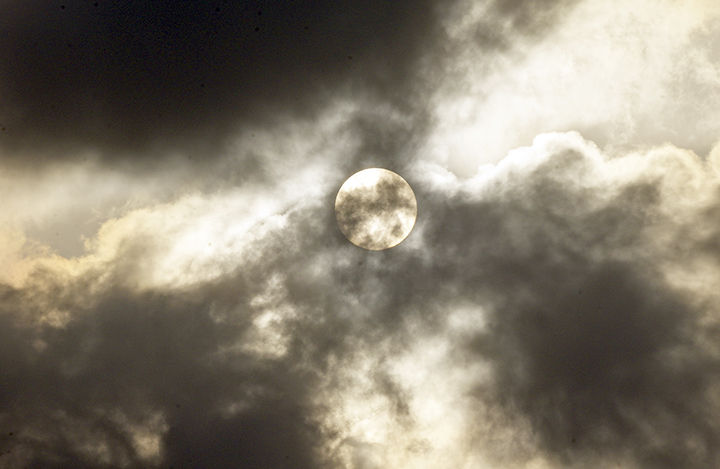The sunsets have been spectacular. But, for some, the ease of breathing has been bad. It can mean only one thing: volcanic smog from the Big Island’s Kilauea Volcano is blowing up the island chain, casting a thick, milky haze over Kauai.
The National Weather Service predicts the vog plume will persist through Sunday.
“It’s all part of living here on an island chain with an active volcano,” said Kim Nguyen, director of the American Lung Association in Hawaii.
Vog can make breathing difficult for folks with healthy lungs and exacerbate symptoms for people with asthma and other respiratory problems. Many people report feeling lightheaded and listless in voggy conditions, and Nguyen said there very well may be truth to that.
“Vog affects different people in different ways,” Nguyen said. “I hear a lot of anecdotal stories from people who say they get headaches or their eyes are tearing.”
A unique part of living in Hawaii is familiarizing yourself with how your own body reacts to vog, and acting accordingly, Nguyen said.
When vog is present, Nguyen recommends people practice a series of simple, precautionary measures. Stay indoors as much as possible. Keep an inhaler nearby if you’re asthmatic. Drink plenty of water. And limit your physical activity.
“That’s not to say don’t do any exercise, but maybe workout on the treadmill indoors that day,” she said. “Hold off on the gardening. It might be a good day to stay indoors with the air conditioner on and do some reading and letter writing. There are times that it’s a vog day and we just have to change our schedules.”
The health effects of vog can be particularly acute for outdoor athletes. That’s why Basil Scott, who runs several miles a day, has made a routine of visually monitoring the weather conditions from his home in Wailua each morning and then adjusting his workout schedule accordingly.
“You know how the mountains go blue and gray and you go, ‘Yikes!’” said Scott, a former Waimea High School track coach. “Maybe I run three or four miles instead of six or seven. But if it’s going to be voggy for three days, you’ve gotta skip. It’s a bummer.”
Scott, who is 59, said running in the presence of vog makes his throat scratchy and his eyes itchy and swollen.
“When it finally clears out it’s like, ‘Hallelujah! We got our air back. I can breathe again,’” he said.
Kilauea is one of the most active volcanos in the world. Part of this activity is the production and release of gases, namely sulfur dioxide, that mix with moisture, oxygen and sunlight to form vog. If the air appears hazy, there’s a good chance you’re witnessing the affects of vog.
Vog is a form of air pollution, which makes for the kind of scarlet sunsets people travel thousands of miles to see. It’s also hazardous enough to irritate the eyes, nose, throat and lungs.
By the time vog reaches Kauai, the sulfur dioxide that makes us wheeze and itch has converted into acid sulfate aerosol, a very fine mist less than a tenth of the diameter of a human hair strand, said Jeff Sutton, staff geochemist at the USGS Hawaiian Volcano Observatory. These particles go readily and deep into our lungs, dissolve in the moist tissue and find their way into the blood stream, he said.
Emissions from the volcano have been steady in recent weeks and there is no noticeable uptick in vog production, according to Sutton. Rather, the perception of increased amounts of vog on Kauai of late is evidence of a shift in wind speed and direction.
“Vog really is pretty much confined to Hawaii Island where it’s produced,” Sutton said. “One of the things that people are claiming with global climate change is that tradewinds are blowing less, which, for Kauai, means more vog days.”
When northeasterly winds are blowing — the normal tradewind pattern — vog settles on the Kona side of the Big Island before being pushed out to sea. But when the Kona winds are blowing southeasterly, vog settles on the Hilo side and sometimes floats up the island chain 305 miles to Kauai.
The normal tradewind pattern is in place about 90 percent of the time, which means vog is present on Kauai no more than 10 percent of the year, Sutton said.
But with the tradewinds reportedly slacking off, more vog days very well be on Kauai’s horizon.
“We can’t put a plug in the volcano,” Sutton said, “but we can change our behavior around it.”





